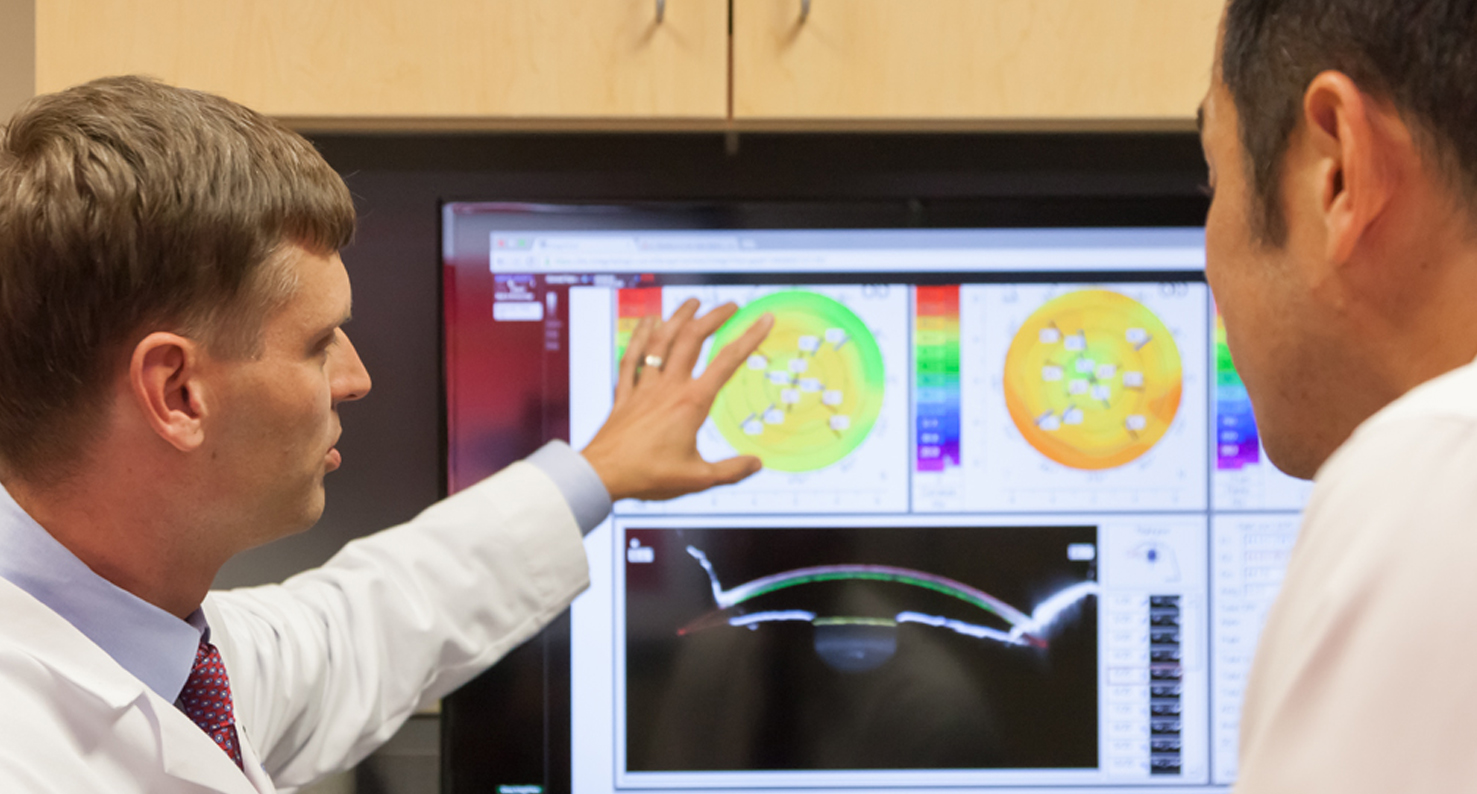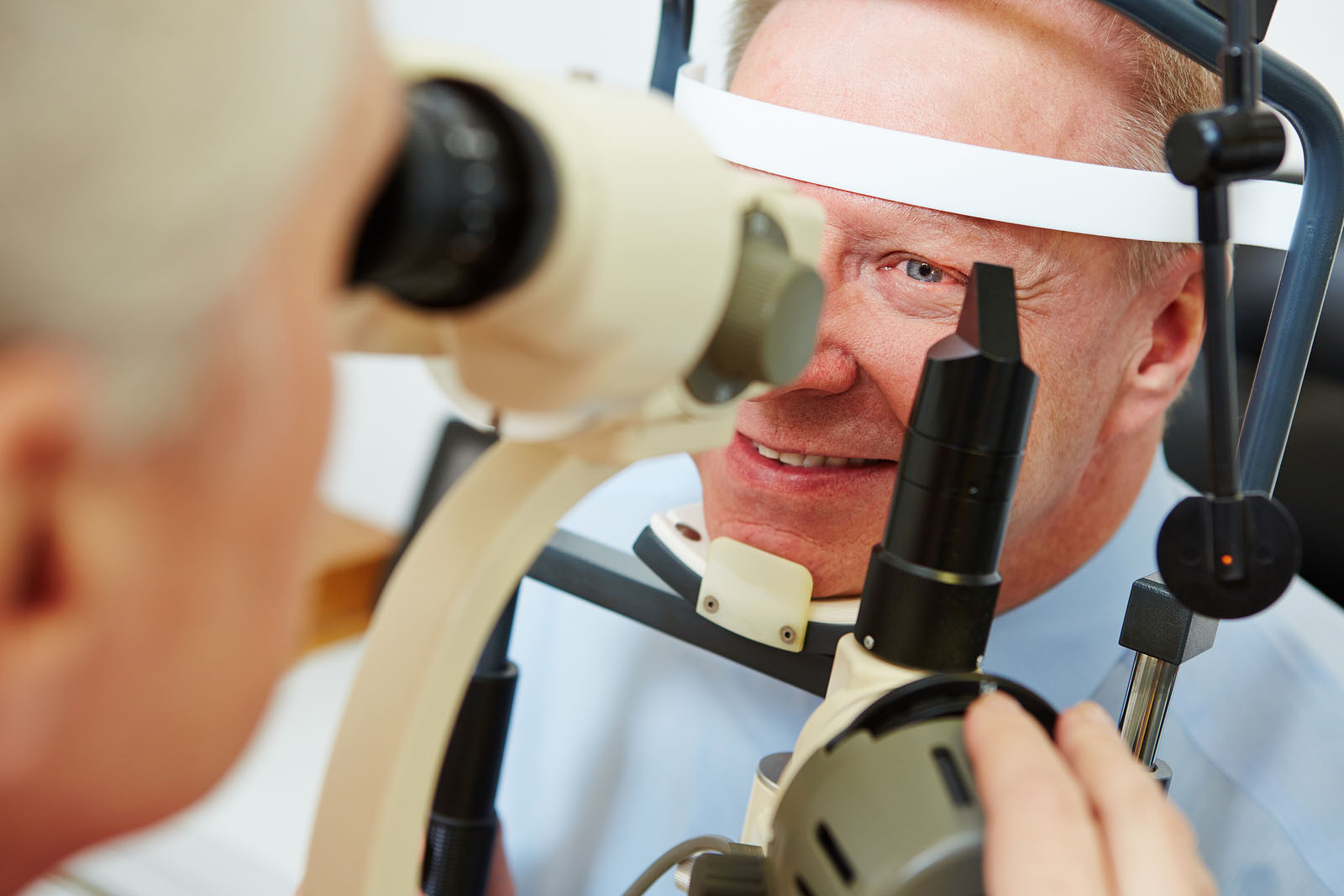Glossary of
Eye Terms

Achromatopsia: A lack of certain receptors in your retinas. Your vision won’t be sharp, and you could be nearly or completely colorblind. It’s an inherited condition.
Alpha-2 agonists: Medications used to treat glaucoma. They help aqueous humor drain out of your eye and stop your eye from making more of it. The result: Lower pressure inside your eye.
Amblyopia: A condition also known as "lazy eye" that starts in childhood. Vision doesn’t develop the way it should in one eye or the other. If it isn’t treated, one eye will always be weaker.
Aqueous humor: The clear, watery fluid between your lens and cornea.
Astigmatism : When your cornea is shaped more like a football than a basketball. It causes blurry vision. You can fix it with glasses, contact lenses, or surgery.
Beta-blocker s: Medicated eye drops that treat glaucoma. They cause your eye to makes less aqueous humor, and that lowers pressure inside it.
Carbonic anhydrase inhibitors: Medications that treat glaucoma. They cause your eye to make less aqueous humor, which lowers pressure.
Choroid: The layer of blood vessels between your retina and sclera.
Choroiditis: A form of uveitis, or inflammation of the uvea, the eye's middle layer. It causes the layer beneath your retina to become inflamed.
Conjunctiva: A thin layer of tissue that lines the inside of your eyelids and the outer surfaces of your sclera.
Conjunctivitis : Inflammation of your conjunctiva, also called pinkeye.
Cornea: The clear front outer layer of your eye. It covers the iris.
Cryotherapy: Surgery that freezes and destroys abnormal cells.
Cyclitis: A form of uveitis that inflames the middle portion of your eye. It can also affect the muscle that focuses your lens. Cyclitis may come on suddenly and last several months.
Dilation: When the eye doctor gives you medicated drops to open your pupil.
Enucleation: When your eye is surgically removed.
Hyperopia: When it’s hard to see objects up close, but things farther away are clearer. The common name for this is farsightedness.
Intraocular: Of or related to the inside of your eye.
Iris: The colored membrane around your pupil. It expands and contracts to control the amount of light that gets into your eye.
Iritis: The most common form of uveitis. It affects the iris and is often linked to autoimmune conditions like rheumatoid arthritis. It can show up suddenly and may last up to 8 weeks, even with treatment.
Kamra inlay: A device implanted in the cornea of one eye. It can improve near vision if you have presbyopia.
Legal blindness: When your vision, in both eyes, can't be corrected to better than 20/200. Or when you have a visual field of 20 degrees or less. (Your eye doctor may call this tunnel vision.)
Low vision: When you’re either legally blind (you have a visual acuity of less than 20/200 or tunnel vision) or have visual acuity between 20/70 and 20/200, despite the use of glasses or contacts.
Macula: The central portion of your retina. When it’s healthy, you’ll have clear, sharp vision.
Macular edema : A swelling of the macula that makes it hard to see. It usually results from injury or disease.
Myopia: When it’s hard to see objects in the distance. You’ll often hear it called nearsightedness.
Night blindness : When you have trouble seeing in dim or darkened conditions. It may result from a lack of vitamin A. Less often, it’s a sign of retinitis pigmentosa.
Nyctalopia: See night blindness.
Ocular: Of or related to your eye.
Ophthalmologist: Doctors who specialize in the medical and surgical care of the eyes. They can be either doctors of medicine (MD) or doctors of osteopathy (DO). They provide total eye care, like vision services, eye exams, medical and surgical care, diagnosis and treatment of disease, and management of complications from other conditions, like diabetes.
Ophthalmoscope: An instrument that examines your retina. There are two types:
- Direct: Examines the center of your retina
- Indirect: Checks your entire retina
Optic nerve: It carries light signals from your retina to your brain, which turns them into images.
Optometrist: A doctor trained to examine, diagnose, treat, and manage eye diseases and disorders. They can prescribe glasses and contact lenses as well as check your eye’s internal and external structures for diseases such as glaucoma, retinal diseases, and cataracts, or common conditions like nearsightedness, farsightedness, astigmatism, and presbyopia. In most states they are not permitted to do laser or other eye surgeries.
Peripheral vision: What you see out of the side of your eye, not your direct line of vision.
Photocoagulation: A type of laser surgery used to stop bleeding or repair damaged tissue. It’s most often used to treat retinal conditions like complications from diabetes. It also helps treat eye tumors.
Pinkeye: See conjunctivitis.
Presbyopia: When your eye can no longer change focus to see objects close up. It isn’t a disease, but a part of the eye’s natural aging process. It affects everyone at some point in life. It usually shows up around age 40 to 45.
Pupil: The round, dark central opening in your eye. This is where light comes in.
Refraction: The way your eye bends light so an image focuses directly onto your retina. Also the procedure by which your doctor determines the optical prescription for glasses or contact lenses.
Refractive error: When your eye doesn’t bend light the way it should. Images are out of focus. The most common refractive errors are astigmatism, farsightedness, and nearsightedness. Your eye doctor can correct it with prescription glasses or contact lenses.
Retina: The thin layer of nerves that lines the back of your eye. It senses light and signals your optic nerve and brain to create images.
Retinitis pigmentosa: Any of a group of retina conditions you can inherit.. Each causes you to lose sight over time. Typically a decrease in night vision may be the first sign followed by your vision tunneling down to just what you see straight ahead. Eventually, your central vision may decrease.
Retinoblastoma : A malignant tumor that forms on your retina. It most often happens in children under the age of 5. It can affect one or both eyes.
Sclera: The outer coat of the eyeball that forms the whites of your eyes.
Strabismus: When your eyes aren’t aligned and can’t point in the same direction at the same time. Crossed eyes is one type of strabismus.
Tunnel vision: When your peripheral, vision is gone. Conditions like retinitis pigmentosa and untreated glaucoma can cause tunnel vision.
Visual acuity: How well you see as measured on an eye chart.
Visual field: Your entire range of sight, including peripheral vision.
Vitrectomy: In this surgical procedure, the vitreous humor is removed from your eyeball and replaced with a clear gel or liquid. It can help when scars or blood in your vitreous blocks your vision.
Vitreous humor: The clear gel-like substance in the center of your eyeball.
NEXT IN EYE BASICS
Related Post

What Your Eye Symptoms May Mean
Tiny blood vessels in your eye may expand or burst when they get irritated or infected.

Guide to Eye Cancers
When healthy cells in your eye change -- or mutate -- and grow too quickly in a disorganized way,



